
BLOOMSBURY CHILDRENS BOOKS Bloomsbury Publishing Inc., part of Bloomsbury Publishing Plc 1385 Broadway, New York, NY 10018 This electronic edition published in 2019 by Bloomsbury Publishing Plc BLOOMSBURY, BLOOMSBURY CHILDRENS BOOKS, and the Diana logo are trademarks of Bloomsbury Publishing Plc First published in the United States of America in January 2019 by Bloomsbury Childrens Books Text copyright 2019 by Jo Ann Allen Boyce and Debbie Levy All rights reserved
You may not copy, distribute, transmit, reproduce or otherwise make available this publication (or any part of it) in any form, or by any means (including without limitation electronic, digital, optical, mechanical, photocopying, printing, recording or otherwise), without the prior written permission of the publisher. Any person who does any unauthorised act in relation to this publication may be liable to criminal prosecution and civil claims for damages. Text from Heres Why Jo Ann Allen Didnt Go To Clinton High This Morning used by permission from
The Chicago Defender Bloomsbury books may be purchased for business or promotional use. For information on bulk purchases please contact Macmillan Corporate and Premium Sales Department at Library of Congress Cataloging-in-Publication Data Names: Boyce, Jo Ann Allen, author. | Levy, Debbie, author. Title: This promise of change : one girls story in the fight for school equality / by Jo Ann Allen Boyce and Debbie Levy.
Description: New York : Bloomsbury Childrens Books, 2019. Identifiers: LCCN 2018026349 (print) | LCCN 2018047038 (e-book) ISBN: 978-1-6811-9852-1 (HB)
ISBN: 978-1-6811-9853-8 (eBook)
Subjects: LCSH: Boyce, Jo Ann AllenJuvenile literature. | African American teenage girlsTennesseeClintonBiographyJuvenile literature. | African American studentsTennesseeClintonBiographyJuvenile literature. | School integrationTennesseeClintonJuvenile literature. | Clinton (Tenn.)Race relationsJuvenile literature.
Classification: LCC F444.C68 B69 2019 (print) | LCC F444.C68 (e-book) | DDC 379.2/630976873dc23 LC record available at https://lccn.loc.gov/2018026349 Interior design by Kay Petronio To find out more about our authors and their books please visit www.bloomsbury.com where you will find extracts, author interviews and details of forthcoming events, and to be the first to hear about latest releases and special offers, sign up for our newsletters. To all humankind whove experienced the pain of injustice and inequality. In memory of my parents, Herbert and Alice Josephine Hopper Allen: your courage, wisdom, love, and belief in me continues to sustain me; and my brother, Herbert Howard: I miss you; I miss your genius. For my children, Victor H., London, Kamlyn: my greatest and most beloved accomplishments, for your support of and help in writing this book; and my grandchildren, Dmitri, Cameron, Maya, and Shia: my beacons of hope, the lights of my life, for loving Nana so much and inspiring me to always tell my story. Education is the most powerful weapon which you can use to change the world. A. B.  With admiration for and gratitude to the twelve students of Clinton, Tennessee, who boldly took their rightful places. D. L.
With admiration for and gratitude to the twelve students of Clinton, Tennessee, who boldly took their rightful places. D. L.  INTRODUCTION
INTRODUCTION  T he U.S.
T he U.S.  INTRODUCTION
INTRODUCTION  T he U.S.
T he U.S.
Constitution says that all American citizens are guaranteed equal protection of the laws. For years, though, the laws of many states required black children and white children to go to separate schools. In Southern states especiallywhere racist traditions had deep roots in centuries of black slavery that endured until the end of the Civil Warmany whites could not abide the thought of their children attending school with black children. Lawmakers, who were uniformly white, would not spend public monies to create good schools for black children. So African American students were forced to attend schools with inferior buildings, supplies, books, and facilities. This type of racial segregation and discrimination in education, required and enforced by state law, was the norm well into the twentieth century.
Despite the Constitutions equal protection guarantee, the U.S. Supreme Court found no constitutional defect in segregation. To the contrary, in 1896, in the case of Plessy v. Ferguson, the Court said that facilities that were racially separate could be considered equalor at least equal enough. Decades later, in 1954, came Brown v. Board of Education.
In that case, the Supreme Court reversed the position it had held in a line of cases since Plessy. Those old decisions were wrong, the justices ruled. Separate but equal schools were not equal. They were not equal even if the buildings, supplies, books, and facilities of schools for black children were brought up to par with schools for whites. Racially segregated schools deprived African American children of equal educational opportunities and were unconstitutionalperiod. And so, what next? A Supreme Court ruling is a big deal, but it cannot enforce itself.
White lawmakers and white citizens were in no hurry to desegregate their schools. Some states passed laws to punish people who attempted to comply with Brown v. Board. Some made plans to shut down their public school systems rather than allow black and white children to go to school together. If Brown v. Boards promise of change was to become reality, people had to take action.
In the small town of Clinton, in eastern Tennessee, a group of twelve African American high school students stepped up. This is the story of one girl among those twelve.  CLINTON, TENNESSEE: MY TOWN (FALL 1955)
CLINTON, TENNESSEE: MY TOWN (FALL 1955)  DONT HURRY THRU TOWN GIVE US A CHANCE TO BE FRIENDLY A sign at the city limits Up on the Hill Foley Hill, some say, but we just say the Hill we look down on downtown not looking down our noses, just looking down from our Hill, where we live. We have the high ground here, here on the Hill, once called Freedmens Hill after ex-slaves moved here when they became ex- way back when the Civil War ended. Those six hundred climbed the Hill north of town and built their homes. Now the Hill is my neighborhood.
DONT HURRY THRU TOWN GIVE US A CHANCE TO BE FRIENDLY A sign at the city limits Up on the Hill Foley Hill, some say, but we just say the Hill we look down on downtown not looking down our noses, just looking down from our Hill, where we live. We have the high ground here, here on the Hill, once called Freedmens Hill after ex-slaves moved here when they became ex- way back when the Civil War ended. Those six hundred climbed the Hill north of town and built their homes. Now the Hill is my neighborhood.
Clinton is my town. Anderson County is my county. Tennessee is my state. Up on the Hill we have all sorts of homes, nice and not-so-nice, mixed up together. Mine is nice. At least, I think so.
We have all sorts of neighbors, nice and not-so-nice, mixed up together. My family is nice, and I dont say that just because theyre my family. Mom says Daddy knows no strangers which is a clever way of saying that he knows



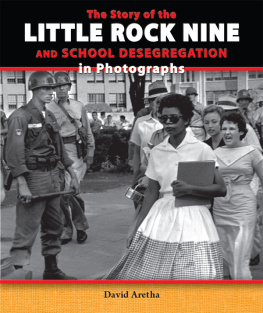

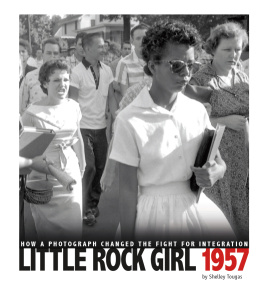

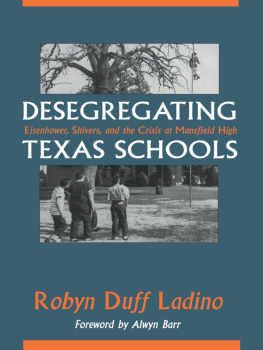

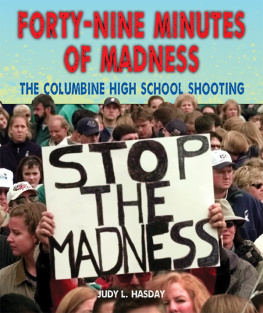
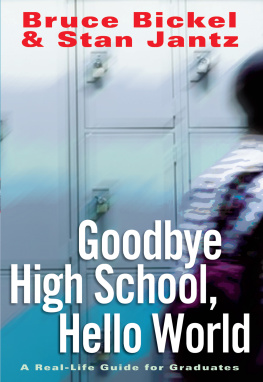
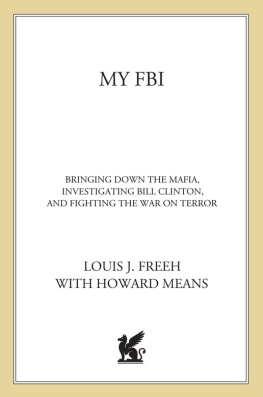

 BLOOMSBURY CHILDRENS BOOKS Bloomsbury Publishing Inc., part of Bloomsbury Publishing Plc 1385 Broadway, New York, NY 10018 This electronic edition published in 2019 by Bloomsbury Publishing Plc BLOOMSBURY, BLOOMSBURY CHILDRENS BOOKS, and the Diana logo are trademarks of Bloomsbury Publishing Plc First published in the United States of America in January 2019 by Bloomsbury Childrens Books Text copyright 2019 by Jo Ann Allen Boyce and Debbie Levy All rights reserved
BLOOMSBURY CHILDRENS BOOKS Bloomsbury Publishing Inc., part of Bloomsbury Publishing Plc 1385 Broadway, New York, NY 10018 This electronic edition published in 2019 by Bloomsbury Publishing Plc BLOOMSBURY, BLOOMSBURY CHILDRENS BOOKS, and the Diana logo are trademarks of Bloomsbury Publishing Plc First published in the United States of America in January 2019 by Bloomsbury Childrens Books Text copyright 2019 by Jo Ann Allen Boyce and Debbie Levy All rights reserved With admiration for and gratitude to the twelve students of Clinton, Tennessee, who boldly took their rightful places. D. L.
With admiration for and gratitude to the twelve students of Clinton, Tennessee, who boldly took their rightful places. D. L.  INTRODUCTION
INTRODUCTION  T he U.S.
T he U.S.  CLINTON, TENNESSEE: MY TOWN (FALL 1955)
CLINTON, TENNESSEE: MY TOWN (FALL 1955)